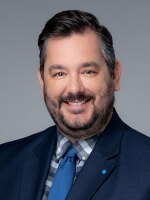For more than 50 years a 200-acre section of South San Diego Bay was cut off from the rest of the bay, choking the natural tidal flow.
This part of the bay was in some ways, a dead zone, separated by levees more than 50 years ago for a salt-pond operation.
But now those levees have been breached.
"First time in 50 years that San Diego Bay has flowed into these ponds and brought them back to life," said Andy Yuen, project leader with the San Diego National Wildlife Refuge.
And now, birds, fish and other wildlife are coming back to what is evolving into a natural marsh habitat.
A few months after the levees were breached, egrets, sanderlings, pelicans, herons, marbled godwits and other birds were flocking to the revitalized marsh.
On one section, called Pond 11, just off Highway 75 and alongside a popular pedestrian and bike-way, restoration work over the past year has included removing debris, redistributing sediment and creating new tidal channels.
"The value of bringing these areas back is we've increased the fish habitat, so these shallow coastal wetlands are an important nursery areas for a variety of fish that are important for commercial and recreation purposes." said Yuen. "So if you like to fish or eat fish, this is a good thing."
It is also a good thing for migratory and resident shorebirds, too. The birds are using the newly opened area for nesting, habitat and food.
"The endangered light-footed clapper rail uniquely nests in the salt marsh cordgrass," said Yuen. "This particular type of habitat is rare in San Diego Bay."
To get a closer look at how the tidal flow is now bringing life back to this area of south San Diego Bay, we took a boat ride with Yuen and Biologist Chris Norby. He helped develop the restoration plans and oversees construction. Norby pointed out new channels of water cutting through the mudflats.
"This is a new depression that's forming that way and a semicircular feature right here goes around and comes out up there so that's all happened in five weeks," Norby said. "This was all essentially a level marsh plain and now it's already starting to show some diversity in the topography, so it's pretty exciting."
Yuen said the goals of the restoration plan are coming to life.
"One of the philosophies that we had in designing the salt marsh project was to create the conditions where nature would take over," said Yuen. "And one of the things that we're seeing is, as we've created these tidal channels, is that the marsh is beginning to claim itself back. And so it's beginning to form secondary channels that are cutting it's way into the salt marsh and creating more diversity of habitats and more circulation within the mudflats themselves."
Planting native cordgrass is another part of the restoration effort.
Holly Henderson is one of several workers planting cordgrass on a slightly elevated mudflat. The planters at times crawl, or are knee-deep or deeper in mud.
Henderson has a ground-level view of the transformation.
"Over the next season or two seasons, watching the amount of growth and spread of the plants and watching it turn into a functioning marsh, is amazing," said Henderson, as she knocked mud from her boots. "We've seen out here thousands of shorebirds that weren't here a month ago, so you cut the channels and you immediately have a functioning wetland and the shorebirds come and feed and it's just really neat to watch while we're out here."
There is still more cordgrass to plant and more work to do before the nearly $8 million project is finished. But so far, the work by humans and nature, has already brought new life to this southwestern portion of San Diego Bay.







